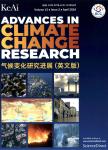Climatic warming in Shanghai during 1873-2019 based on homogenised temperature records
作者机构:Key Laboratory of Cities'Mitigation and Adaptation to Climate Change in ShanghaiShanghai Regional Climate CenterShanghai 200030China Key Laboratory of Regional Climate-Environment for East AsiaInstitute of Atmospheric PhysicsChinese Academy of SciencesBeijing 100029China University of Chinese Academy of SciencesBeijing 100049China
出 版 物:《Advances in Climate Change Research》 (气候变化研究进展(英文版))
年 卷 期:2022年第13卷第4期
页 面:496-506页
核心收录:
学科分类:07[理学] 070601[理学-气象学] 0706[理学-大气科学]
基 金:supported by the National Key Tech.Res.&Development Programme(2017YFE0133600) the National Natural Science Foundation of China(42175056,41790471) the Natural Science Foundation of Shanghai(21ZR1457600)and the China Meteorological Administration Innovation and Development Project(CXFZ 2022J009)
主 题:Homogenised temperature series Long-term climate warming Effect of urbanisation Muli-decadal variability
摘 要:Xujahui(XJH)station in downtown Shanghai holds the longest continuous daily temperature series in China,which is unique for assessing modern climate change and impacts but must be *** present work established a set of homogenised monthly and daily surface air temperature(SAT)series during 1873-2019 at *** major inhomogeneous break points(around 1954 and 1993)were identified in the original SAT series,which had been overlooked in previous *** inhomogeneous biases were adjusted via the inter-station deviation *** adjusted SAT series shows a warming trend of 1.9℃ per century compared with 1.7℃ per century in the original *** multi-decadal variations of quasi-32-year and quasi-64-year periods are weaker in the adjusted series than in the original series,suggesting overestimated multi-decadal variability in the original data due to inhomogeneous *** to the early period 1873-1900,the recent decade(the 2010s)is warmer by 2.2℃.Urbanisation has been responsible for approximately 19.3%of the rapid warming since the *** high and low SAT extremes exhibit significant warming,especially after the *** trend in the low SAT extremes in the adjusted series is substantially larger than that in the original series,implying that previous studies might underestimate the warming in cold extremes.



